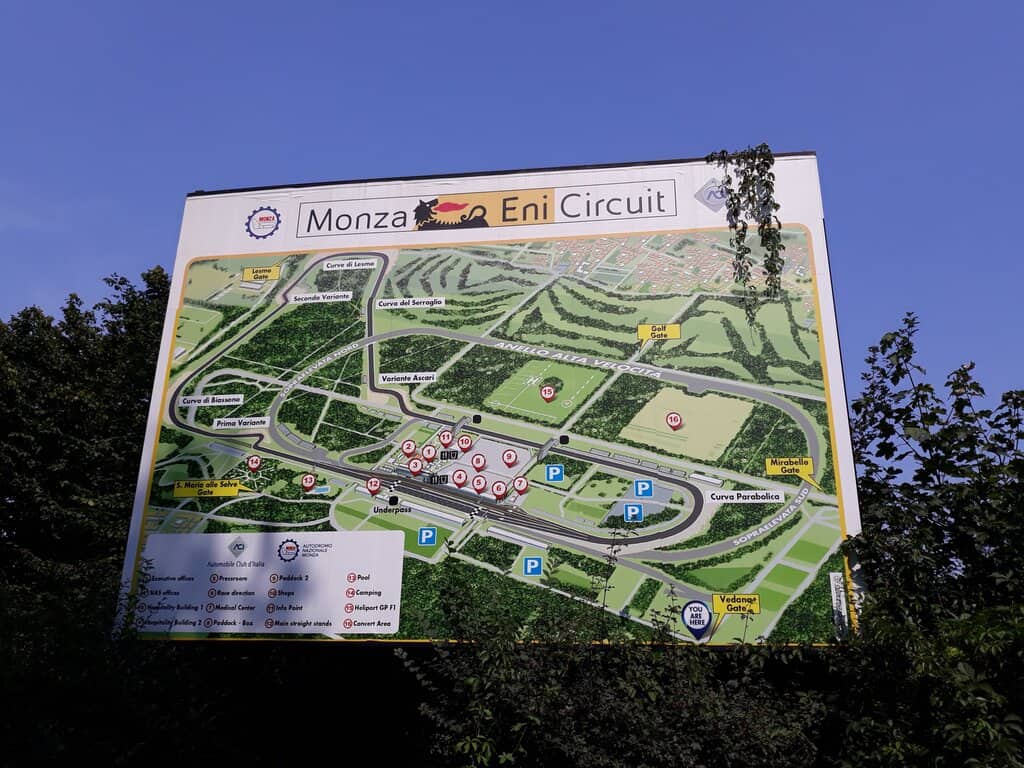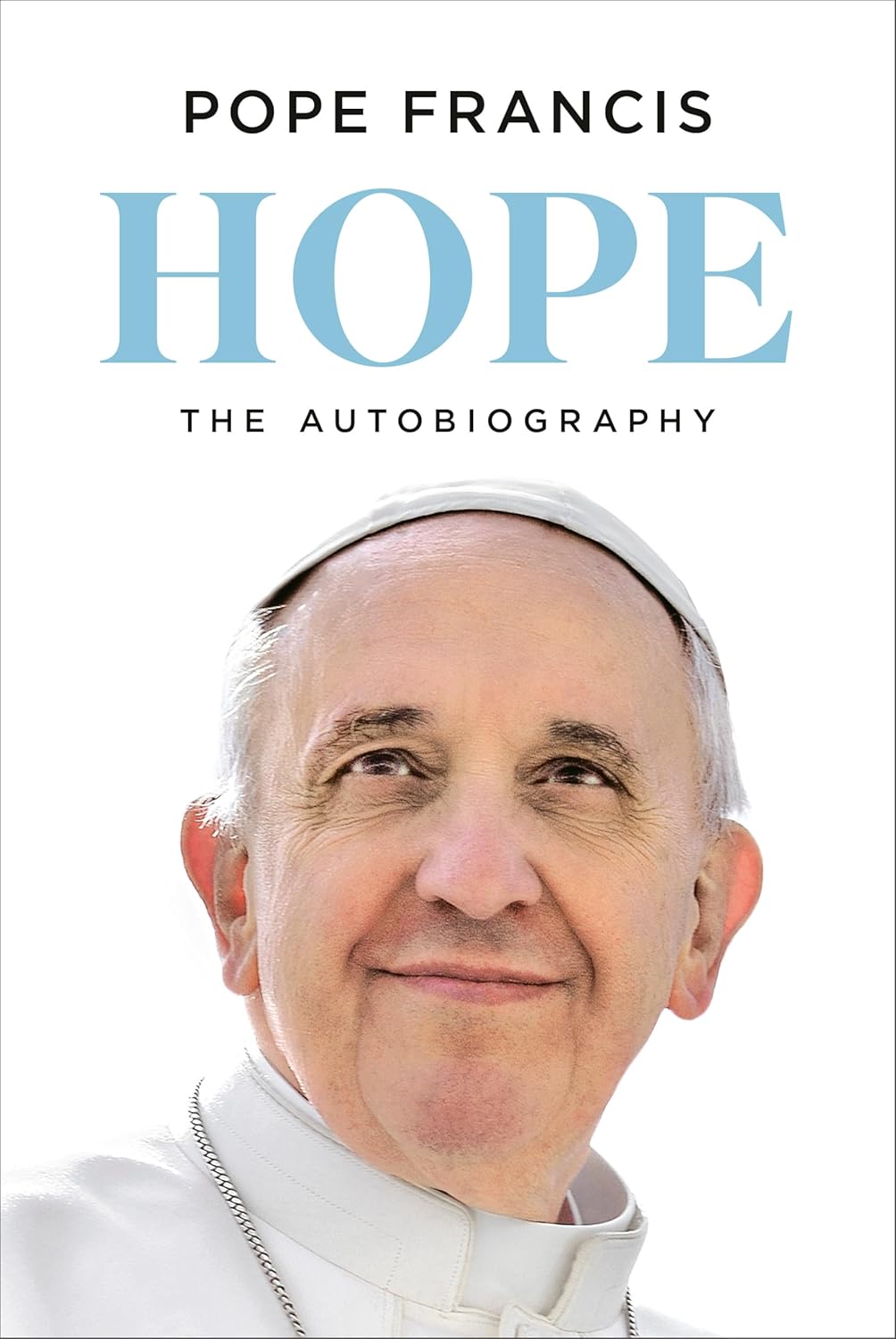Monza is a city of kings and emperors. It boasts a Versailles and is the proud owner of a legendary crown. Visit Monza and experience the kings of Formula 1 racing too.
Ten minutes. That’s the travel time by local train between Milan and Monza. Then it’s a good five minutes on foot to the cathedral in the city centre. This church has a wide, white marble Gothic façade from the 14th century. A jewel. But the true gem is inside the cathedral: the chapel with a fresco cycle on the life of Theodelinde. Because of this chapel alone, Monza is worth a visit and offers a good alternative to Milan.
Kingdom saved
Stepping into the chapel, a (comic) book opens up, as it were. The ‘book’ consists of 45 paintings on five horizontal strips (registers) covering 180 degrees. Like any book, you start reading from left to right and top to bottom. So you can ‘read’ that Theodelinde, daughter of the Duke of Bavaria, marries the Longobard King Authari in 588.
Hope: The Autobiography
By Pope Francis
New York Times bestseller
First autobiography by a Pope
A vivid memory…
Get offer at Amazon.comThe poor man dies within the year. The couple is childless. It is unusual at the time for a woman to occupy the throne. So the kingdom is in danger.

Theodelinde would not be the first woman to be sidelined by a usurper who then takes over. Yet the intelligent Theodelinde manages to choose a suitable new husband herself. Of course, she does not choose the cobbler on the corner, but looks in the circle of high nobility. Her eye falls on Duke Agilulfo. The marriage is a success, an heir to the throne is born and the kingdom is saved.

A similar incident takes place nine centuries later. Filippo Maria Visconti, the archduke of Milan, suffers from an incurable disease and has only one daughter, Bianca Maria. The latter, although married to Francesco Sforza, has no children.
The royal family is doomed to disappear. But then, in 1444, Bianca does give birth to a son. The dynasty is saved, even though the future heir to the throne bears his father’s surname.
Fort Knox
Back to Teodelinde. It is therefore no coincidence that the decoration of the Teodelinde chapel began in 1444. The chapel is an ode to Theodelinde, who enjoyed great fame even nine centuries after her death, as well as an ode to the successful takeover within the family business – actually a very current theme. Both the arms of the Visconti and Sforza families are depicted.

The frescoes look crisp, but shone even more centuries ago. This was due to the signature in ochre colour, which was not applied directly under the fresco as usual, but directly onto the wet plaster layer. This created an additional transparency.
There are also traces of gold leaf, silver and Afghan lapis lazuli. What a spectacle it must have been at the time when the candlelight made the chapel flicker and sparkle.

Theodelinde, moreover, was also the woman who got the Lombards to convert to Catholicism. In fact, the Lombards were Arian Christians, who thought differently about the Trinity and thus contrasted with mainstream Christianity.
Needless to say, the pope was very pleased with Theodelinde. He gifted Monza a number of treasures, which can still be seen today in the cathedral and the adjoining cathedral museum. The most important relic is a crown, stored in a shrine on the altar of the chapel.

The relic is heavily guarded. Fort Knox is nothing like it. The chapel is locked with a hermetically heavy metal fence anyway, and visitors cannot wander around the chapel by themselves, but are guided by two staff members. Elisabetta, one of the staff, pulls out an impressively large key. She opens a metal hatch. Behind it is another small door.
That too is opened with a key. She then pulls out a glass cube, slides a velvet bench underneath and then we see the crown in its glass casing. The crown is very basic, namely round, and consists of six gold elements with cheerful buttons (gemstones). Despite the gold, this object is called the ‘Iron Crown’.

The crown once contained, so the story goes, the iron from one of the nails of the Cross. Of course, it could be seen as pure Catholic idolatry, but Elisabetta does not think we should see it that way. Relics give courage and the strength to overcome difficulties, she says.
Important heads of history have worn the crown. It is fascinating to think that emperors (of the Holy Roman Empire) like Charlemagne, Frederick Barbarossa and Charles V have been in Monza because of that crown. Napoleon too had it on.
Also read: about the rivers near Monza (and the rest of Italy)
Thanks to the Iron Crown, Monza had the aura of the City of Kings for at least 1,000 years. Even though Milan became more important and significant over time, Monza retained its allure. However, Italy’s last kings, those of the House of Savoy (1861-1946), were forced to do without the crown.
Because the family had supported the Italian unification movement, which had led to the downfall of the clerical state, they were denied the crown (by the Church).

This was quite embarrassing as they lived around the corner. Indeed, the Savoys had their country residence in the Villa Reale (‘royal villa’), which with 740 rooms is a Versailles in miniature. The villa was commissioned by Empress Maria Theresa of Habsburg in the 18th century. The villa was symbolically located on the line between Vienna and Milan. It was common at the time for the bon ton to have their country houses in the hills around Monza.
Napoleon also regularly came to Monza. He had the Villa Reale redecorated and shifted the axis of the villa so that it was thus on the line between Milan and Paris. The most important thing the little man did was to fence the park. By the way, the fence consists of the stones of Monza’s ancient (Roman) city wall. It is thanks to that wall that Villa Reale (which is also the name of the park) is today the largest fenced park in Europe.
The last residents of the villa were King Umberto I and his wife Margherita. The anarchist Gaetano Bresci also knew about the royal fondness for Monza. On 29 July 1900 he murdered -just outside the fence- the king. On the spot now stands a huge monument consisting of a raised column topped with the crown of Savoy.

At the time, the villa and the surrounding park were completely self-sufficient. Anno 2024, the park surrounding the villa still includes a farm, rose garden and as many as 110,000 trees grow there. Campers are bound to feel at home in the park: it is flat and, with 700 hectares, huge. There is even a campsite.
Those who don’t walk or jog, take a bike. It is also popular with practitioners of Nordic walking. The farm sells fresh milk and yoghurt. Bridges lead across the Lambro, a small river, which runs through the park.
Visit Monza’s racetrack
Part of the park is occupied by a car circuit. And not just any one. Monza (population 120,000) is very well known among car fanatics, as the Formula 1 race is held at that circuit every September.

Monza then takes centre stage for a while. It is the only racetrack in the world that has been on the racing calendar continuously since 1950 (except for one year). In short, it is the ‘king’ among race tracks. And that puts the race track in the long royal tradition of Monza. Of course, it is quite possible that if King Umberto were alive today, he would have complained about noise. Blame him!








